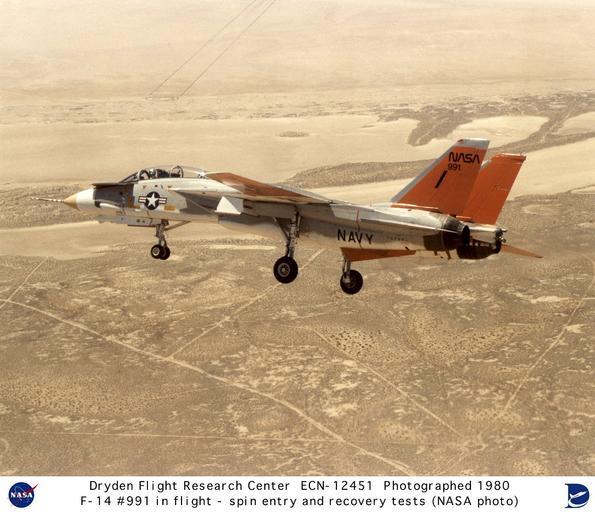MAKE A MEME
View Large Image

| View Original: | F-14_-991_in_flight_during_spin_entry_and_recovery_tests_DVIDS693601.jpg (1536x1321) | |||
| Download: | Original | Medium | Small | Thumb |
| Courtesy of: | commons.wikimedia.org | More Like This | ||
| Keywords: F-14 -991 in flight during spin entry and recovery tests DVIDS693601.jpg en NASA's F-14 tail number 991 Navy serial number 157991 in 1980 soon after its arrival at the Dryden Flight Research Center The aircraft has its landing gear down and its wings swept forward At the nose the hydraulically actuated canards are extended Other modifications for high angle of attack and spin tests were an auxiliary power unit a nose boom and an emergency spin chute Following the loss of several F-14s in spins due to their automatic flight-control system's control law architecture in partnership with Grumman and Honeywell Langley Research Center engineers developed new control laws involving what was called an aileron/rudder interconnect ARI that succeeded in limiting departures and providing recoveries from spins The F-14 with the new control laws proved to be very responsive and maneuverable above 30 degrees angle-of-attack with no abrupt departure or spin tendencies The program was an unqualified success but the Navy did not immediately incorporate the new control laws into its F-14s because of insufficient funding As a result mishaps with the Tomcats continued Finally the Navy contracted with GEC Marconi Avionics of the United Kingdom to incorporate the control laws into a digital flight-control system with minimal changes and this was deployed on fleet F-14Ds aboard the USS Kitty Hawk and USS Roosevelt in March of 1999 decreasing the danger of out-of-control flight and making powered approaches to carrier landings much safer Meanwhile already in 1980 Dryden research pilot Einar Enevoldson had received the NASA Exceptional Service Medal for his contributions as project pilot on the F-14 stall and spin resistance tests NASA Identifier NIX-ECN-12451 2009-09-23 Glenn Research Center https //www dvidshub net/image/693601 693601 2012-10-10 13 05 WASHINGTON DC US PD-USGov Langley Research Center aircraft Images from DoD uploaded by Fæ | ||||